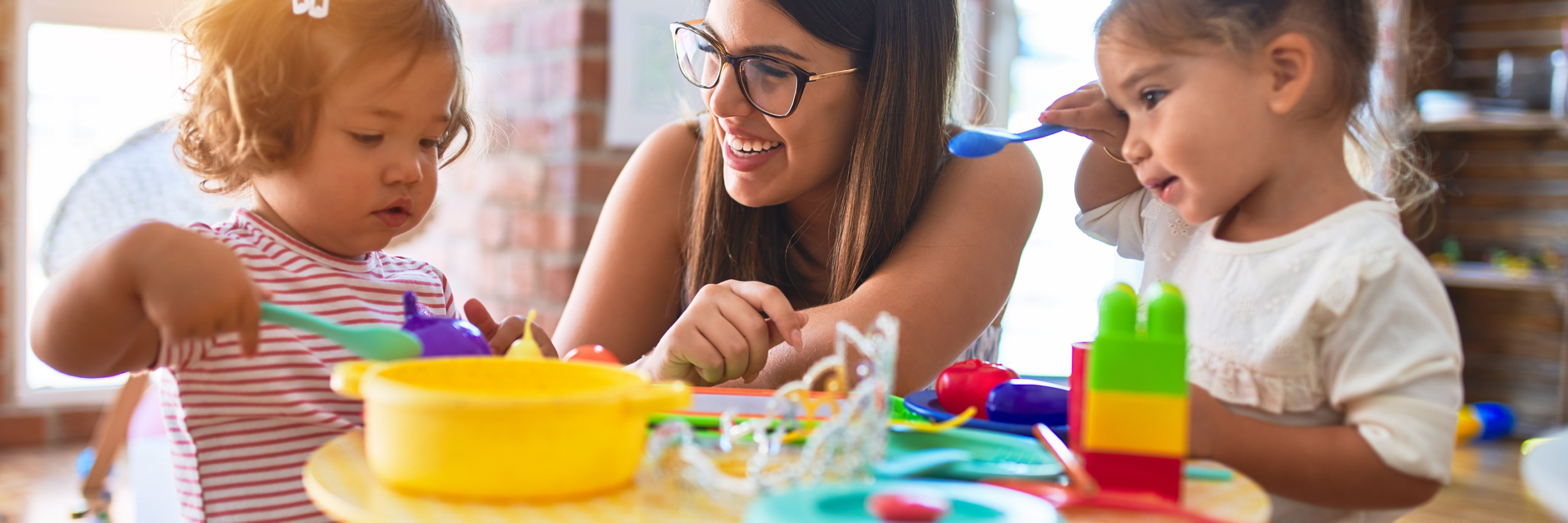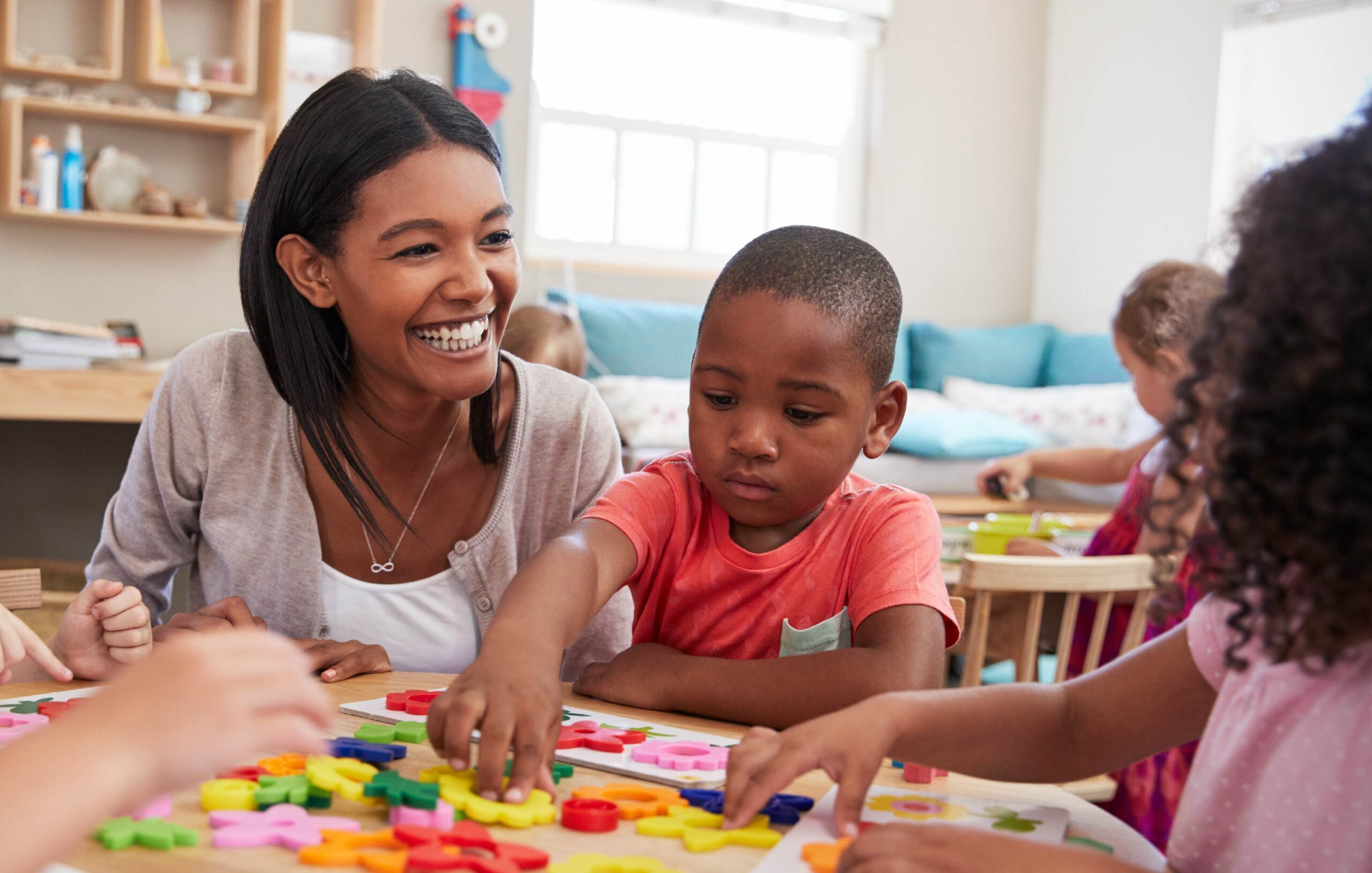Simple Things To Support Social-Emotional Skills
PublishedPaying close attention to the social-emotional development of young children is critical, now more than ever. In today’s post—great for sharing with families, too—we’re bringing you some simple, effective things you can do to help children build confidence, cope with big emotions, and manage stress and worry. (For more practical strategies, see the books referenced at the end of the post.)
Set small challenges for them. Help kids practice the art of working through frustration by giving them small projects that test their developing skills, such as climbing to the top of a structure or drawing a shape. Children will benefit from verbal encouragement when they’re getting frustrated: “You can do it.” “You’re almost there—keep trying.” Showing confidence in children will help them build their own confidence and learn to persist until the skill is mastered.
Use music to spark conversations about feelings. Put on some music and dance together, using scarves or light blankets to wave around while you dance. Play different types of music, and ask children if the music sounds happy, sad, silly, mad, or scary. Talk about how the different kinds of music make each of you feel. Encourage children to make facial expressions that demonstrate the feelings they get from the music.
Communicate expectations clearly. Children feel reassured when they know what’s expected of them. Before transitioning to a new activity, identify two simple rules or expectations you might communicate to ease anxiety and help the transition go smoothly. For example, before naptime, you might say “Before we have naptime, what do we need to remember? Keep quiet as a mouse. Lie down and either go to sleep or just rest.”
Share appreciations at mealtime. Meals provide a great opportunity to share kindness along with good food. During mealtime, have each person say something kind or give thanks to another person at the table. You can talk about the word appreciation and give an example: “Tommy, I appreciated how you picked up those toys today. Thanks so much.” Model gratitude so that children learn to appreciate the people and things in their lives.
Use puppets to model positive behavior. Puppets are a fun and effective way to teach social-emotional skills and peaceful conflict resolution strategies. Collect a cast of store-bought or handmade puppet characters, give them names like Homer Helper and Frannie Fixer, and make up skits and dialogues that demonstrate how to resolve problems and help peers who are upset. Modeling words and behaviors explicitly can help kids adopt kind, sharing, and helping behaviors.
Read books about feelings together. Reading about other children’s feelings helps children think about their own. It also helps them know that feelings—even big ones—are okay and normal. For example, if you want to help prepare children to deal with anger, read a book such as The Anger Monster by Jennifer Anzin or When Sophie Gets Angry—Really, Really Angry… by Molly Bang. Use the following questions to guide your discussion:
- Which character was angry?
- Do you think it was a good or not good feeling?
- What did the character look like when angry?
- What did the character do when they were angry?
- Did the character use a Way that Hurts or a Way that Helps to handle anger?
Enlist peers as “coaches.” In a classroom setting, supplement your other behavior strategies by pairing children with a peer who can help model expected behavior. For example, if you have a child who repeatedly sings and calls out during quiet classroom activities, have her sit near a peer who is more skilled at staying quiet and on task. Talk to the peer “coach” privately and show her how to help her classmate by gently tapping her own lips if her peer starts to sing or call out.
Give them a break. Kids don’t need to be busy all the time—in fact, all children need quiet times to relax. Make a comfy nest with pillows, blankets, and books. When it’s possible, cuddle up together and take a break. After lunch, a rest time or a nap may help the rest of the day go more smoothly.
Try a relaxation exercise. Help children cope with stress and worry by teaching them exercises they can do to calm themselves when they’re feeling anxious. Here’s an example:
- Have children find a quiet, comfortable place.
- Ask them to sit or lie quietly. Dim the lights if possible.
- Say, “Close your eyes. Take deep breaths. Breathe in and out slowly.”
- Have them tighten their muscles, group by group. Then ask them to loosen their muscles and make their bodies calm.
- Say, “Think about your favorite place, a place that makes you feel happy and calm. Sit quietly for a few minutes and continue breathing deeply and thinking about your happy place.”
Involve children as valued helpers. Empower kids by soliciting their ideas for making their home or classroom more pleasant and functional—for example, they may suggest a more convenient arrangement for storing blocks, or a way to create more floor space for play. Get children involved in planning special events, such as a class party or a visit from the grandparents. When it’s time to clean up, work helpfully alongside the children and admire their contributions. When children are involved in—and praised for—activities that create more comfortable and orderly living spaces, they’ll feel more safe, secure, and confident.
Have nighttime check-ins. For parents, having a nightly check-in with a child at bedtime is a great way to explore the day’s emotions and address anything they might be struggling with, from tough or confusing situations with friends to worries about the upcoming school day. Ask the child, “How was your day?” “What was fun?” “Did anything hard happen?” With support and reassurance from a parent or other caregiver, kids can clear their mind of worries before bedtime.
For more tips on nurturing social-emotional development in young children, refer to the books used to create today’s post:
Tips 1, 2, 4, 8, and 11 adapted from ASQ®:SE-2 Learning Activities & More, by Elizabeth Twombly, M.S., Leslie J. Munson, Ph.D., & Lois M. Pribble, Ph.D.
Tips 6 and 9 adapted from Merrell’s Strong Start—Pre-K: A Social and Emotional Learning Curriculum, Second Edition, by Sara A. Whitcomb, Ph.D., & Danielle M. Parisi Damico, Ph.D.
Tips 5 and 10 adapted from Little Kids, Big Worries, by Alice Sterling Honig, Ph.D.
Tips 3 and 7 adapted from Early Social-Emotional Development, by Nicole M. Edwards, Ph.D.



